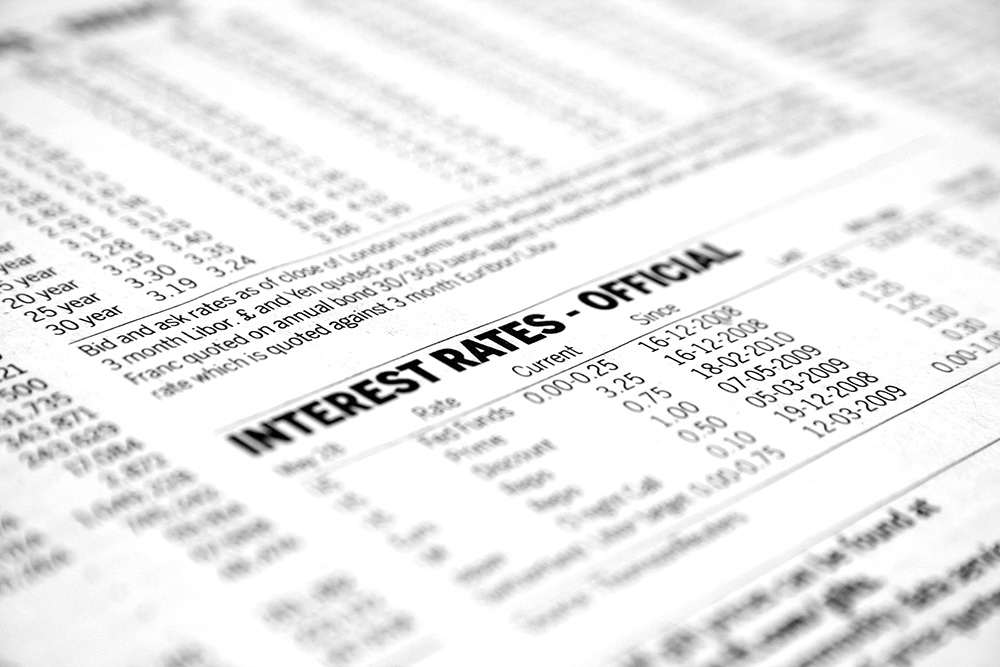
Between lively discussions in corporate boardrooms, and heated debates at the local café, Kiwis can’t get enough of talking about interest rates. It’s a topic that’s always buzzing. Interest rates are a key driver of New Zealand’s economy, influencing everything from mortgages and business investments to everyday savings. With the Reserve Bank of New Zealand (RBNZ) gearing up for its next Official Cash Rate (OCR) announcement, the million-dollar question is:
Will interest rates rise, fall, or hold steady?
The impact of this decision ripples across financial markets, affecting borrowing costs and returns on savings. But what determines these rates? Why do they often seem different from what’s advertised? In this guide, we break down the mechanics of interest rates in New Zealand, helping you understand how they work and why they matter to your financial future.
The Official Cash Rate (OCR) Explained
You might be surprised to learn that banks lend money to each other all the time. This happens for a number of reasons, such as managing daily cash flow and maintaining the minimum reserve requirements set by RBNZ.
The OCR (Official Cash Rate) is the interest rate that banks pay when borrowing from or depositing money with the Reserve Bank overnight. It also influences the rates banks charge each other when they lend and borrow short-term funds.
Since the OCR forms the base for most lending in the country, it’s sometimes called the base interest rate. However, it’s important to note that it’s not the same as the interest rates you see on your home loan, credit card, or savings account. Those rates depend on other factors like risk, global economic conditions, and competition between banks.
How Interest Rates Work?
Banks make money by borrowing at one rate and lending at another. The difference between the two is known as the interest margin, and it helps banks cover their operational costs, risks, and profits.
Here’s how it works:
Savings & Deposit Accounts
When you deposit money into a savings account, your bank pays you interest. This is a cost to the bank, known as a ‘funding cost’, because they are essentially borrowing money from you.
Loans & Mortgages
Banks take that deposited money and lend it out as loans either for homes, cars, businesses, or even holidays. The interest they charge borrowers (the ‘lending rate’) is higher than what they pay savers.
The OCR plays a major role in determining both savings and lending rates.
- When the OCR increases, borrowing becomes more expensive, so banks charge higher interest rates on mortgages and loans. At the same time, savings rates may rise slightly, encouraging people to save rather than spend.
- When the OCR decreases, borrowing becomes cheaper, meaning lower mortgage and loan rates. However, savings rates also drop, making it less attractive to keep money in the bank.
How Interest Rates Affect the NZ Economy
The RBNZ adjusts the OCR to help keep inflation in check and stabilise the economy. Here’s how it works:
When Interest Rates Go Up:
- Borrowing becomes more expensive, so people take out fewer loans.
- Mortgage repayments rise, leaving households with less disposable income.
- Businesses cut back on expansion due to higher financing costs.
- Consumer spending slows down, helping reduce inflation.
When Interest Rates Go Down:
- Borrowing becomes cheaper, encouraging people to take loans.
- Homeowners with variable-rate mortgages pay less, freeing up extra cash.
- Businesses invest more, leading to job creation and economic growth.
- Consumer spending increases, which can lead to higher inflation.
The RBNZ carefully balances these effects to keep inflation within its target range of 1-3%.
What’s Happening in New Zealand Right Now?
As of early 2025, the RBNZ has set the OCR at 3.75%, following a recent 0.50% cut aimed at stimulating economic activity.
- For borrowers, this means mortgage rates could stabilise or even drop slightly.
- For savers, however, returns on deposits may not be as high as they were during periods of rising interest rates.
If you’re thinking about buying a house or refinancing your mortgage, now is a great time to review your options.
What Does This Mean for You?
Interest rates aren’t just numbers on a bank statement. They directly impact your finances and the decisions you make every day. So, what can you do to stay ahead?
- If you have a mortgage: Consider fixing part of your loan to lock in a lower rate or keeping some on a variable rate to take advantage of possible cuts.
- If you’re saving money: Shop around for the best savings rates. Some banks offer better returns on term deposits than standard savings accounts.
- If you’re thinking of borrowing: Lower rates mean cheaper loans, but always consider your ability to repay when rates rise again.
- If you own a business: Lower interest rates can be a great time to invest in growth, but keep an eye on economic trends before taking on too much debt.
Get Expert Advice on Your Home Loan
Understanding interest rates and mortgage options can feel overwhelming, especially with the market constantly changing. But you don’t have to do it alone.
At Oliver Broomfield Mortgages, we specialise in helping Kiwis find the best home loans tailored to their financial situation. If you’re looking to buy your first home, refinance, or manage your loan repayments more effectively, we can help you with:
- Compare lenders to find the lowest rates
- Explore options for fixed and variable home loans
- Identify ways to save on interest payments
- Get expert advice tailored to your financial goals
Get in touch today and let’s find a mortgage solution that works for you.

